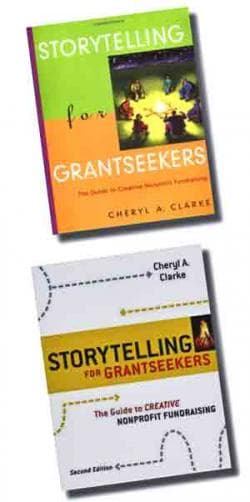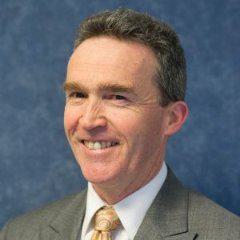Secrets of a great funding proposal
- Written by
- Cheryl A Clarke
- Added
- June 03, 2013
Book review

Storytelling for Grantseekers: A guide to creative nonprofit fundraising by Cheryl A. Clarke.
Reviewed for SOFII by Roewen Wishart.
The foreword to this short and readable book summarises its value well, ‘For reluctant writers who need warm-up exercises and structured lessons…and for seasoned grant writers who get caught up in the jargon of our fields.’
Sometimes, against our better judgement, we let the full technical or management jargon of our organisations dominate our funding proposals. There are two influences at work here; in Clarke’s words, ‘We choose big words instead of short ones because we believe they make us sound smarter.’
Secondly, we fundraisers, and the programme staff and management of our organisations, are influenced by the jargon and style of the professional people whose work helps achieve our mission. For example, education and social services have a terminology that isn’t necessarily clear to donors. Universities teach many scientists to write in the passive voice; maybe our job is to turn their words back into the active voice. The active voice is easier to read and it allows our stories and purposes to jump out from the page. Many lawyers who were trained before the advent of plain English use overly long and complex language. (Clarke is, in her own words, a ‘recovering lawyer’.)
The premise of the book is that a good funding proposal is like a story. It should have the vivid and memorable images of a story – characters, events, places. It should closely follow the narrative structure of a story. In brief, the ‘hero’ of the story is the not-for-profit, the ‘antagonist’ is the problem being addressed, the ‘climax’ is the persuasive goal and objectives which the donation will make possible, and the ‘epilogue and foreshadowed sequel’ are the evaluation phase of the project and the indications of the next stage and its funding.
One qualification of course is that many donors, particularly foundations, have their own format for applications. Nevertheless this structure is still relevant, even if the order and titles are changed.
The most useful chapter of the book is short and near the end. Clarke suggests that after almost completing a proposal, we stop and consider the title, the headings, and a summary, either in a covering letter or at the start of the document. Donors, particularly larger foundations, look at many proposals, so to make a proposal stand out it must have a project title that is evocative, yet clear (and need not use the ‘in-house’ working title of the project). The document headings should help convey our argument, not be simply subject titles, for this, and throughout the book, Clarke gives plenty of useful examples.
I have just one small difference of opinion with the author: her recommendation to ‘write the way you speak’. The freshness and directness of spoken language often contains what we want to communicate to donors. Real or imagined conversations with donors, project staff and beneficiaries are great places to find the content of our funding proposals. However the syntax of written and spoken English differ and, if we literally ‘write the way we speak’, we are likely to sell our organisation’s case short.
This book first appeared in 2001. The second edition came out at the start of 2009.
© Roewen Wishart 2010
 Roewen Wishart joined Bush Heritage Australia, a nature conservation not-for-profit, in 2001. Until 2007 he was national fundraising manager and now specialises in major gifts. He is a member of the Fundraising Institute of Australia National Ethics Committee and a board member of Diplomacy Training Program, which provides human rights training for activists.
Roewen Wishart joined Bush Heritage Australia, a nature conservation not-for-profit, in 2001. Until 2007 he was national fundraising manager and now specialises in major gifts. He is a member of the Fundraising Institute of Australia National Ethics Committee and a board member of Diplomacy Training Program, which provides human rights training for activists.

















